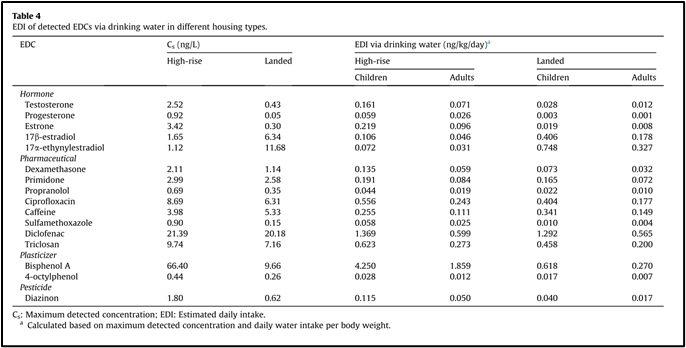By: Sze Yee Wee, Ahmad Zaharin Aris, Fatimah Md Yusoff, Sarva Mangala Praveena
Article Prepared By: Farah Izana binti Abdullah
Endocrine-disrupting compounds (EDCs) occurred in multiple classes such as pharmaceuticals and personal care products, hormones, pesticides, plasticizers, polyhalogenated compounds, and phthalates due to their extensive utilization in broad scopes of consumer products and industrial chemicals. Because of the incomplete removal, EDCs remain in the soil, water, sediments, and biota at trace levels. Drinking water has become an additional route of human exposure to contaminants. Existing drinking water treatment technologies were not designed to eliminate EDCs from drinking water sources and have contributed to the incomplete treatment of drinking water as well as quality issues and impacts. This study investigates the presence of multiclass EDCs in tap in the different housing types, landed and high-rise. Currently, neither international nor national environmental and drinking water regulatory compliance includes emerging EDCs in drinking water. From the study, it was revealed the inefficient regulation of the drinking water supply system, especially in the distribution systems that varied in terms of design and demand. Contamination of household tap water was observed at higher levels in high-rise housing for 10 out of 18 monitored EDCs (testosterone, progesterone, estrone, dexamethasone, ciprofloxacin, sulfamethoxazole, diclofenac, bisphenol A, 4-octylphenol, and diazinon). Moreover, the occurrence of EDCs (caffeine and sulfamethoxazole) and water quality parameters (salinity and conductivity) in different housing types were significantly different. The variation was due to varying hydraulics of the different structures of housing types, which had different water distribution systems such as pumping and storage in terms of design and construction, as well as water demand. Despite the differences, there was no potential risk of EDC exposure for different age groups via drinking water intake.
Web: https://doi.org/10.1016/j.chemosphere.2020.128488

Date of Input: 09/05/2022 | Updated: 09/05/2022 | m_fakhrulddin
MEDIA SHARING





























